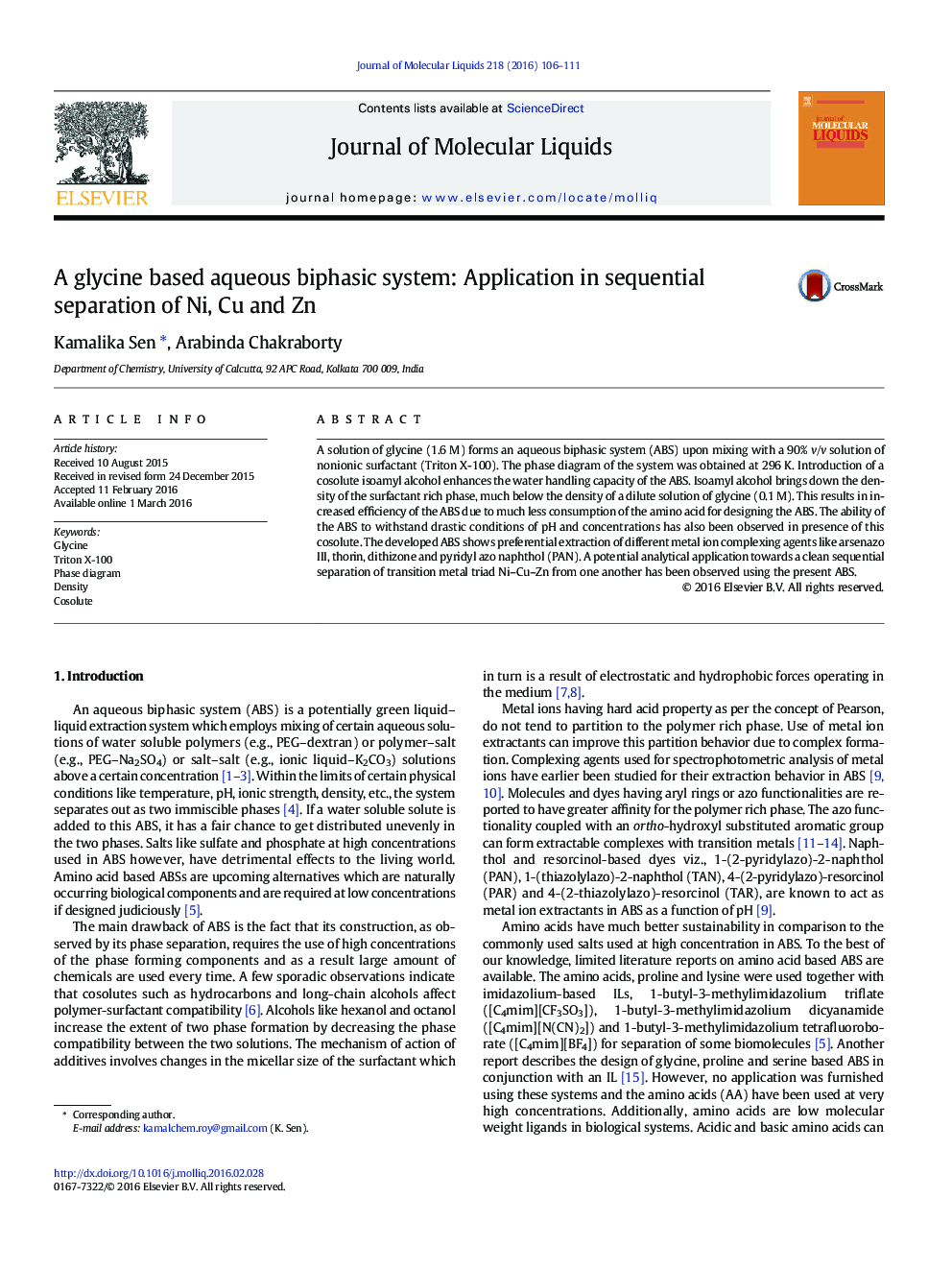| Article ID | Journal | Published Year | Pages | File Type |
|---|---|---|---|---|
| 5410371 | Journal of Molecular Liquids | 2016 | 6 Pages |
â¢A solution of glycine (1.6 M) forms an aqueous biphasic system (ABS) with a 90% v/v solution of Triton X-100.â¢The phase diagram of the system was obtained at 296 K.â¢Introduction of isoamyl alcohol enhances the water handling capacity of the ABS.â¢The ABS shows preferential extraction for arsenazo III, thorin, dithizone and pyridyl azo naphthol (PAN).â¢A clean sequential separation of transition metal triad Ni-Cu-Zn from one another is observed using this ABS.
A solution of glycine (1.6Â M) forms an aqueous biphasic system (ABS) upon mixing with a 90% v/v solution of nonionic surfactant (Triton X-100). The phase diagram of the system was obtained at 296Â K. Introduction of a cosolute isoamyl alcohol enhances the water handling capacity of the ABS. Isoamyl alcohol brings down the density of the surfactant rich phase, much below the density of a dilute solution of glycine (0.1Â M). This results in increased efficiency of the ABS due to much less consumption of the amino acid for designing the ABS. The ability of the ABS to withstand drastic conditions of pH and concentrations has also been observed in presence of this cosolute. The developed ABS shows preferential extraction of different metal ion complexing agents like arsenazo III, thorin, dithizone and pyridyl azo naphthol (PAN). A potential analytical application towards a clean sequential separation of transition metal triad Ni-Cu-Zn from one another has been observed using the present ABS.
